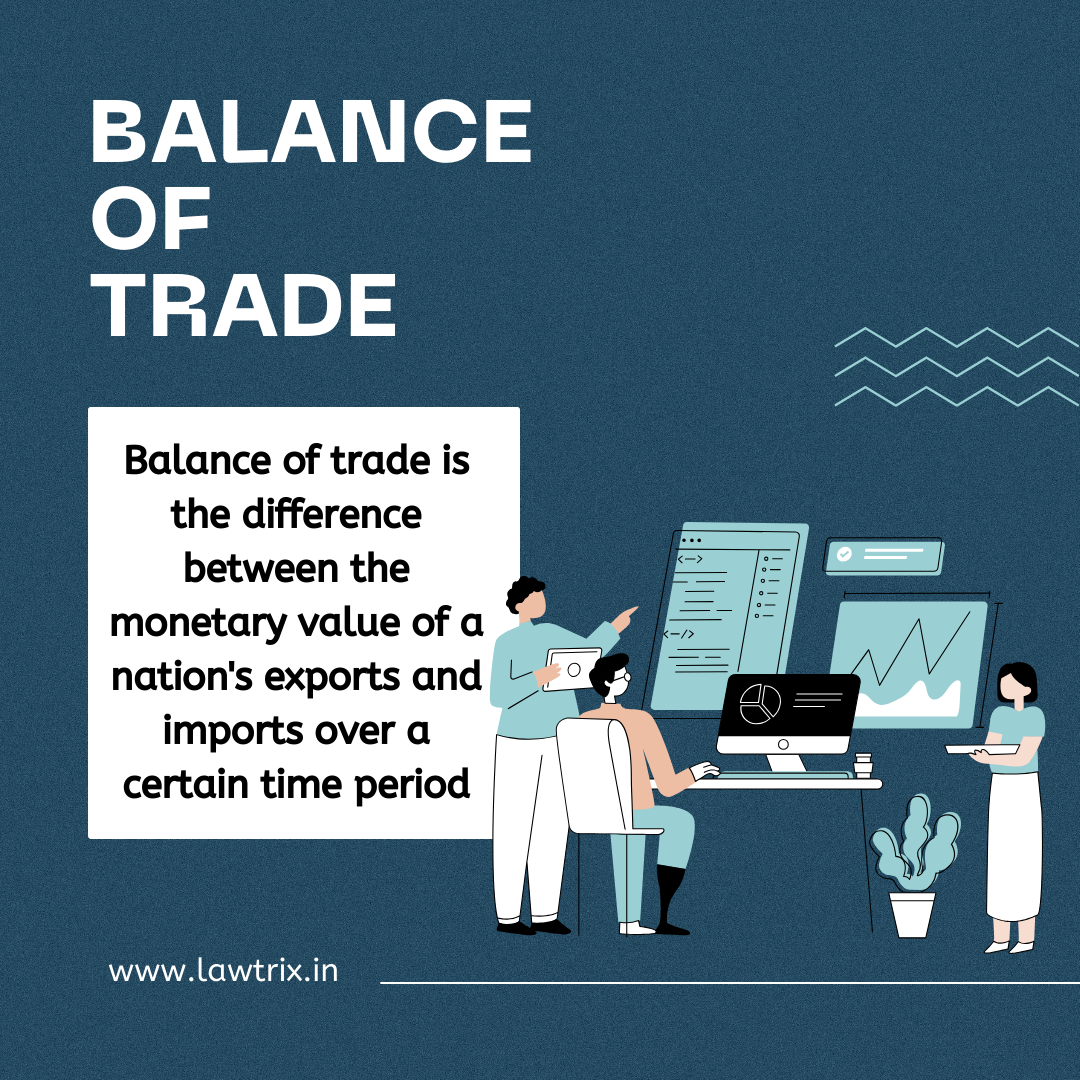


Balance of trade can be measured in terms of commercial balance, or net exports. Balance of trade is the difference between the monetary value of a nation's exports and imports over a certain time period. The balance of trade measures a flow variable of exports and imports over a given period of time. The notion of the balance of trade does not mean that exports and imports are "in balance" with each other.
If a country exports a
greater value than it imports, it has a trade surplus or positive trade
balance, and conversely, if a country imports a greater value than it exports,
it has a trade deficit or negative trade balance.
The balance of trade is a key component of a country's balance of payments and represents the difference between the value of a country's exports and imports of goods. It is one of the most commonly cited indicators in international trade.
Factors influencing the
balance of trade include:
1. Exchange
Rates: Fluctuations in currency exchange rates can impact
the competitiveness of a country's exports and imports.
2. Global
Economic Conditions: The overall health of the global
economy can affect demand for a country's exports.
3. Domestic
Economic Conditions: The strength of a country's economy
influences both its ability to produce goods for export and its citizens'
purchasing power for imports.
4. Trade
Policies: Government policies, such as tariffs and trade
agreements, can impact the balance of trade by affecting the costs of imports
and exports.
5. Specialization and Comparative Advantage: Countries often specialize in producing goods and services in which they have a comparative advantage. This can influence the composition of a country's exports and imports.
The balance of trade
forms part of the current account, which includes other transactions such as
income from the net international investment position as well as international
aid. If the current account is in surplus, the country's net international
asset position increases correspondingly. Equally, a deficit decreases the net
international asset position.